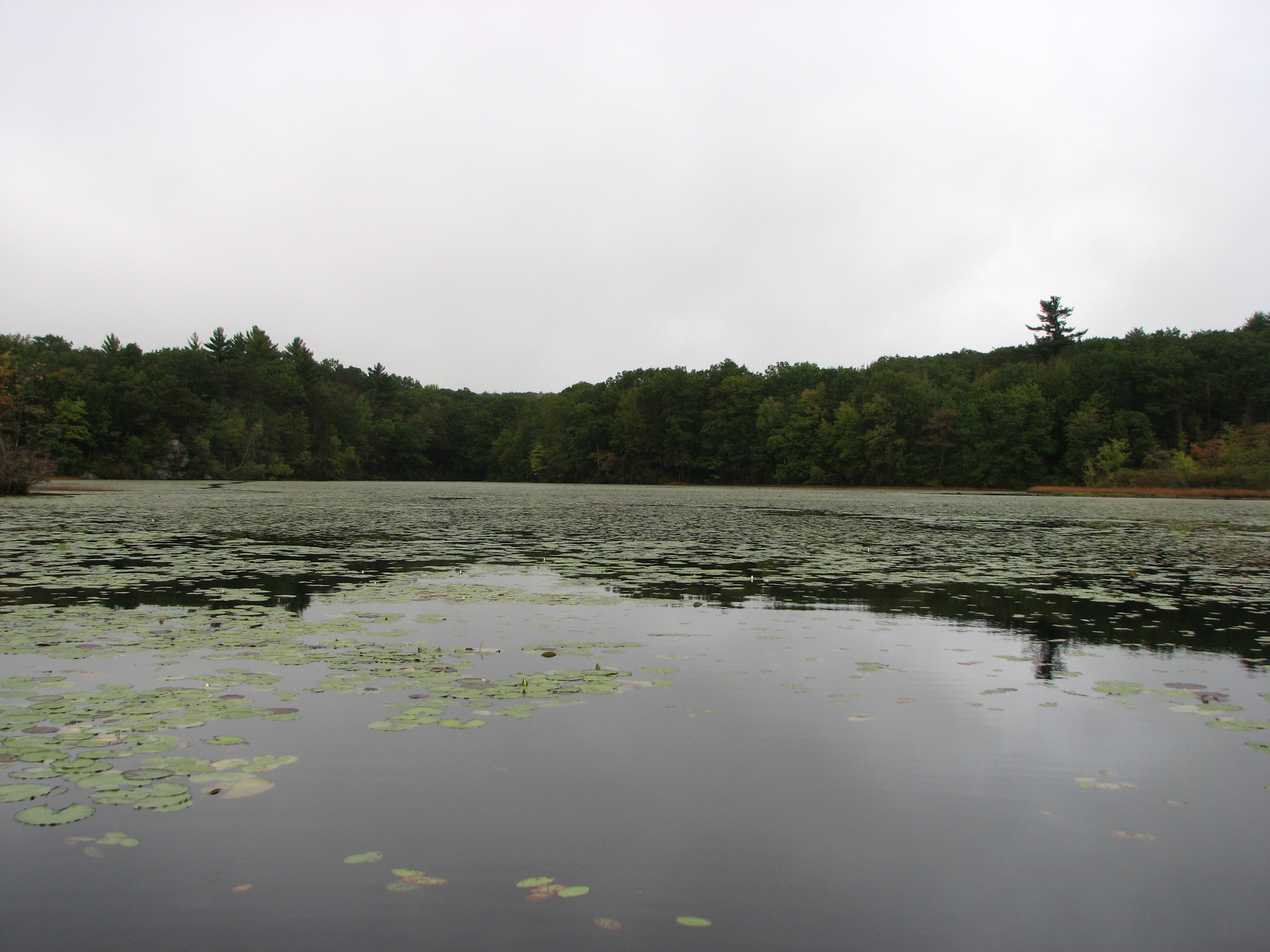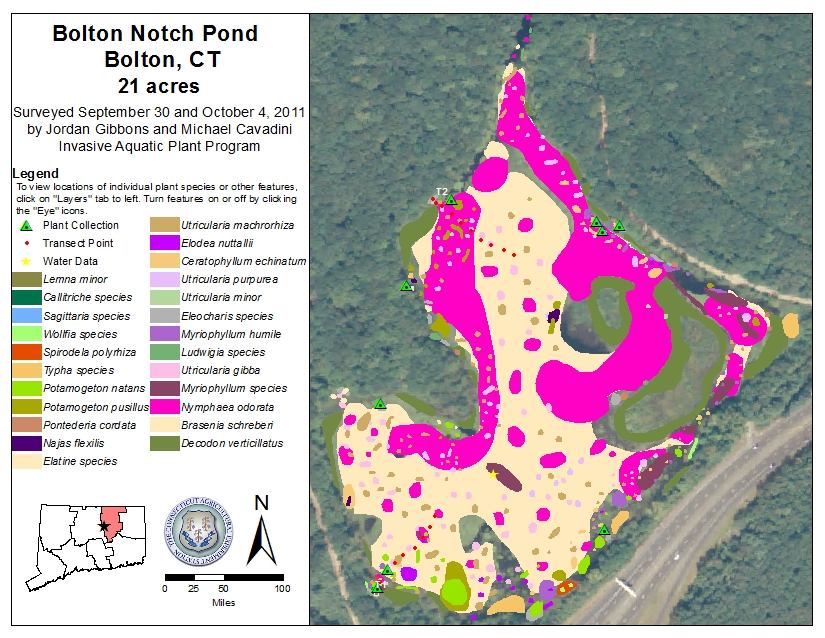
Bolton Notch Pond, Bolton
Bolton Notch Pond is a 21-acre lake located along Route 44 in Bolton, Connecticut. Freya Park and Bolton Notch State Park border the lake on the eastern and western sides.The East Coast Greenway has a trailhead next to the pond and there is a canoe and kayak boat launch onto the waterbody. The lake and its surrounding land are used primarily for recreational activities.The lake is shallow with a maximum depth of 1.5 meters.
The CAES IAPP 2011 aquatic plant survey found 24 species, none were invasive. The most dominant plant was watershield (Brasenia schreberi). The plant covered most of the surface of the lake. Of the two transects consisting of a total of 20 points, watershield was present at 15 of the points. The next most dominate plant was white water lily (Nymphaea odorata), also a floating plant. White water lily was found in large patches along the northwestern shore and was present in smaller patches throughout the lake. Other floating native plants that were found in smaller amounts near the shorelines include large duckweed (Spirodela polyrhiza), watermeal (Wollfia species), and common duckweed (Lemna minor). Bladderworts (Utricularia) were also abundant. Four different species were found: humped bladderwort (Utricularia gibba), common bladderwort (Utricularia machrorhiza), lesser bladderwort (Utricularia minor), and purple bladderwort (Utricularia purpurea). Humped bladderwort was the most frequently occurring bladderwort species. It was found at 12 points along the two transects.
Many shallow water plants were found growing together.These plants include water starwort (Callitriche species), waterwort (Elatine species), spikerush (Eleocharis species), primrose-willow (Ludwigia species), watermilfoil (Myriophyllum species), slender naiad (Najas flexilis), floating-leaf pondweed (Potamogeton natans), small pondweed (Potamogeton pusillus), and arrowhead (Sagittaria species). Plants that were found along the shoreline were swamp loosestrife (Decodon verticillatus), pickerelweed (Pontederia cordata), and cattail (Typha species). Swamp loosestrife was found in large amounts and was starting to dominate some the shallow water regions.


